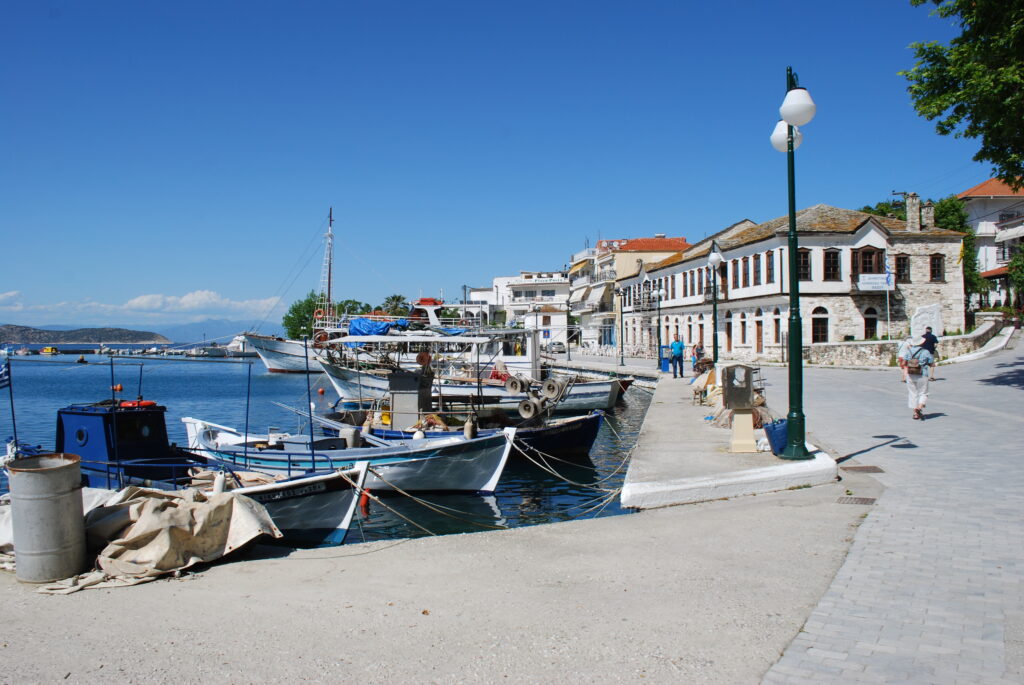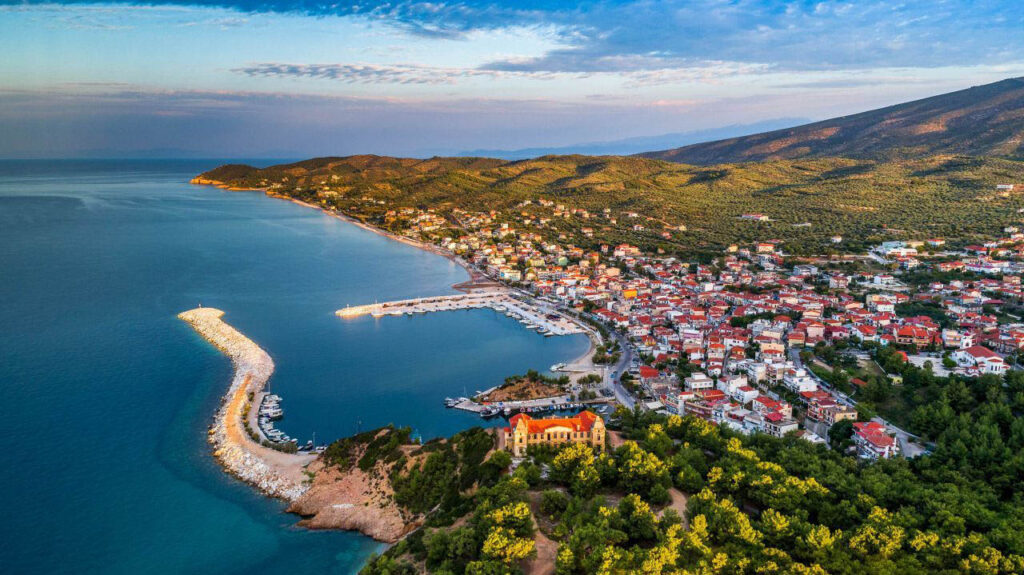If you’ve ever admired the timeless beauty of ancient Greek architecture or the striking sculptures that have captivated the world for centuries, chances are you’ve encountered the renowned Thassos marble. But have you ever wondered where this exquisite stone originates? Prepare to uncover the fascinating story behind one of Greece’s most prized natural resources.
Thassos marble is exclusively quarried from the picturesque Greek island of Thassos, located in the northern Aegean Sea. This dazzling white dolomitic marble has been a cherished material for Greek and Mediterranean culture since ancient times, gracing the most iconic structures and works of art throughout history.
What is it about Thassos marble that has captivated the world for centuries? Discover the unique origins, properties, and cultural significance of this remarkable stone that continues to shape the architectural and artistic legacy of Greece.
Key Takeaways
- Thassos marble is exclusively quarried from the Greek island of Thassos in the northern Aegean Sea.
- This renowned white dolomitic marble has been a prized resource for Greek and Mediterranean culture since ancient times.
- Thassos marble is highly sought after for its exceptional purity, brilliance, and durability.
- The marble deposits on Thassos were formed through a complex geological process millions of years ago.
- Thassos marble has been used in the creation of some of the most iconic works of art and architecture in the classical world.
Introduction to Thassos Marble
Thassos marble is a highly sought-after variety of white marble that originates from the Greek island of the same name. Known for its exceptional purity, brilliance, and durability, Thassos marble has been prized throughout history for its use in prestigious architectural and sculptural projects.
Renowned White Marble from Greece
This fine-grained, dolomitic marble is characterized by its uniform white color, which can range from bright, luminous tones to soft, creamy hues. Thassos marble is valued for its excellent workability, making it a popular choice for intricate carvings, elaborate architectural elements, and high-end interior finishes.
Properties and Uses of Thassos Marble
The exceptional properties of Thassos marble, such as its purity, brilliance, and durability, have made it a highly sought-after material for a wide range of applications. From prestigious architectural projects to detailed sculptural works, Thassos marble has been utilized extensively throughout the Greek marble varieties and across the Mediterranean region for centuries.
Where does Thassos marble come from?
Thassos marble is exclusively quarried from the Greek island of Thassos, which is located in the northern Aegean Sea, just off the coast of mainland Greece. The Thassos island marble deposits on this picturesque island were formed millions of years ago through a complex geological process that involved the metamorphosis of limestone under intense heat and pressure.
Thassos Island: Birthplace of the Marble
The geological formation of Thassos marble can be traced back to the unique geologic history of the Thassos island. Over time, the limestone deposits on the island were subjected to extreme heat and pressure, resulting in the creation of the high-quality, white dolomitic marble that Thassos is renowned for. This aegean marble provenance has made Thassos a prized source of greek marble sources for centuries, with the island’s marble being used in some of the most iconic architectural and sculptural works of the ancient Greek world.
Geological Formation of Thassos Marble
The where does thassos marble come from? can be attributed to the island’s unique geological history. Through a process of metamorphism, the limestone deposits on Thassos were transformed into the highly sought-after, white dolomitic marble that is now quarried from the island. This remarkable geological formation has endowed Thassos marble with its exceptional purity, uniformity, and durability, making it a prized material for both historical preservation and modern construction projects.
Thassos Marble Quarries
The extraction of Thassos marble takes place in several quarries located across the picturesque island. The most significant quarrying sites on Thassos are found in the northern and central regions of the island, where the highest-quality marble deposits are concentrated.
Major Quarrying Sites on Thassos Island
The northern and central parts of Thassos are home to the island’s premier Thassos marble quarry sites. These quarries have been the primary sources of the renowned white dolomitic marble that has been prized throughout history for its exceptional purity, brilliance, and durability.
Traditional Quarrying Methods
The traditional quarrying methods used on Thassos involve manual techniques that have been passed down through generations of local stonemasons and quarry workers. These time-honored practices include cutting and splitting the Thassos marble using specialized tools and machinery, ensuring the preservation of the island’s unique marble quarrying techniques and heritage.
| Major Thassos Marble Quarry Sites | Traditional Quarrying Methods |
|---|---|
| Northern and central regions of Thassos island | Manual cutting and splitting of marble using specialized tools and machinery |
| Highest-quality Thassos marble deposits | Time-honored practices passed down through generations of local stonemasons and quarry workers |
| Primary sources of the renowned white dolomitic Thassos marble | Preservation of Thassos’ unique marble quarrying techniques and heritage |
Thassos Marble Provenance
The provenance of Thassos marble can be reliably traced back to its source on the island of Thassos. This is due to the unique geological characteristics and visual markers that are distinctive to the marble quarried on the island. Experts in the field of marble provenance can identify the origin of Thassos marble through a combination of techniques, including petrographic analysis, stable isotope testing, and visual inspection.
This ability to trace the marble’s source helps to ensure the authenticity and quality of Thassos marble used in various applications, from historical preservation to high-end construction projects. By accurately identifying the origin of Thassos marble, professionals can validate the provenance and ensure the integrity of this prized Greek marble in both traditional and contemporary settings.
Aegean Marble Sources
In addition to the renowned Thassos marble, the Aegean region of Greece is home to a variety of other high-quality greek marble deposits. Other notable greek marble varieties include the Pentelic marble from the Attica region, the Proconnesian marble from the Sea of Marmara, and the Skyros marble from the island of Skyros. These marble types, each with their own unique visual characteristics and geological origins, have all contributed to the rich cultural heritage and architectural legacy of Greece throughout history.
Other Greek Marble Varieties
The aegean marble sources in Greece extend beyond the famous Thassos marble. The Pentelic marble quarried from the Attica region, for instance, is renowned for its fine-grained texture and soft, creamy hue. Similarly, the greek marble types found on the island of Skyros and in the Sea of Marmara region offer their own distinct visual signatures, further enhancing the diverse palette of high-quality marble available from the Aegean.
History and Cultural Significance
Thassos marble has a long and storied history, dating back to ancient Greek civilization. The pristine white marble from the island was highly prized by ancient Greek sculptors and architects, who used it to create some of the most iconic and enduring works of art and architecture in the classical world, such as the Parthenon in Athens. The history of thassos marble is a testament to the island’s rich cultural heritage and its pivotal role in shaping the artistic and architectural legacy of ancient Greece.
Ancient Greek Marble Art and Architecture
The exceptional cultural significance of thassos marble is evident in its widespread use throughout ancient Greek ancient greek marble art and architecture. The marble’s purity, durability, and versatility made it a preferred material for sculptors, who crafted exquisite statues and reliefs that adorned temples, public spaces, and private residences. Similarly, architects turned to Thassos marble to create some of the most renowned structures of the classical era, including the Parthenon, the Erechtheion, and the Propylaea, all of which showcase the remarkable craftsmanship and artistry of ancient Greek builders.
Thassos Marble in Modern Times
In modern times, thassos marble in modern architecture continues to be a sought-after material, featured in high-end residential and commercial projects, as well as in the restoration and preservation of historic landmarks. The unique characteristics and enduring cultural significance of Thassos marble ensure its place as a symbol of Greek craftsmanship and artistic excellence, transcending eras and continuing to inspire architects, designers, and art enthusiasts worldwide.
Conclusion
In conclusion, the renowned Thassos marble originates exclusively from the Greek island of Thassos, located in the northern Aegean Sea. This exceptional white dolomitic marble has been a prized resource for Greek and Mediterranean culture for centuries, used in the creation of some of the most iconic works of art and architecture in the classical world. The where does thassos marble come from and thassos marble origin can be traced back to this idyllic island, where the marble deposits were formed through a complex geological process.
Today, thassos marble quarry location continues to be a source of immense pride for the people of Greece, as the island’s marble is highly sought after for its superior quality, unique characteristics, and rich cultural significance. The greek marble sources and aegean marble provenance all contribute to the enduring legacy of Thassos marble, which remains a symbol of Greece’s artistic and architectural excellence.
As we delve deeper into the world of Thassos marble, we are reminded of the timeless beauty and craftsmanship that have defined this remarkable material for generations. The island’s marble deposits have not only shaped the physical landscape of Greece, but also its cultural identity, making Thassos a true treasure of the Aegean region.





